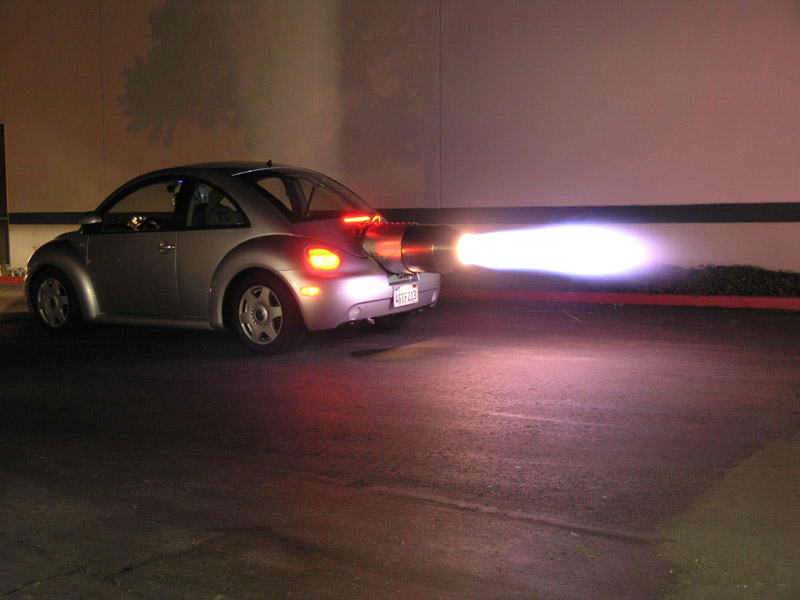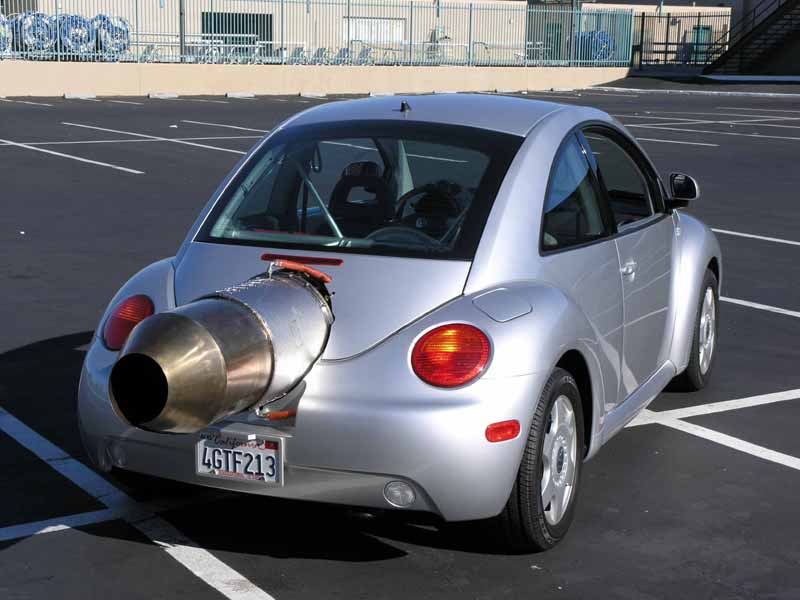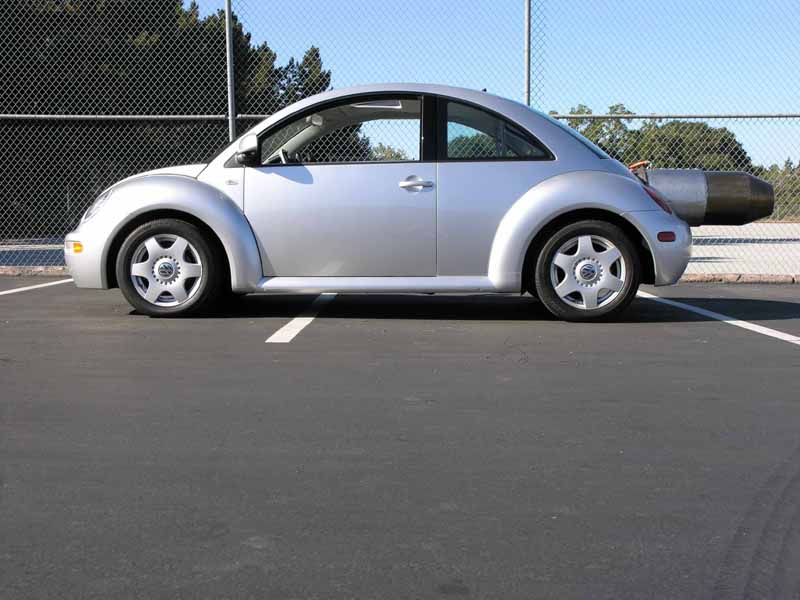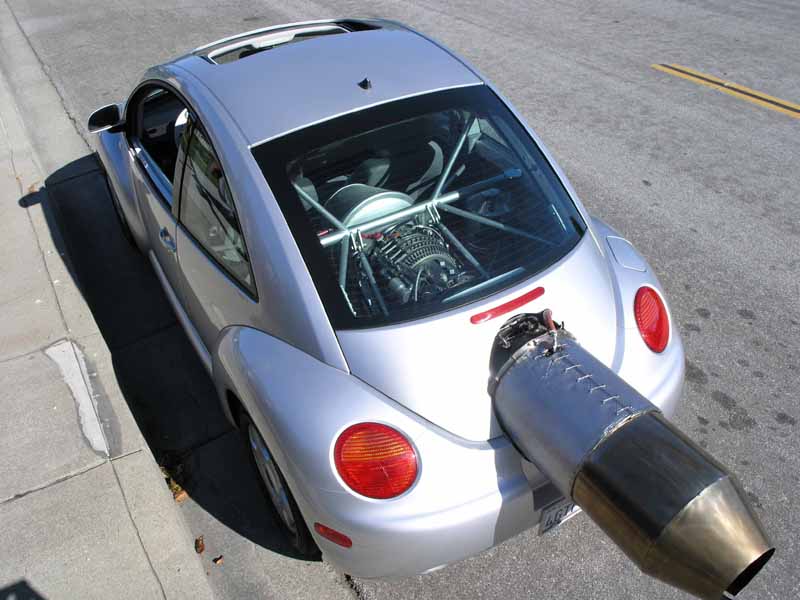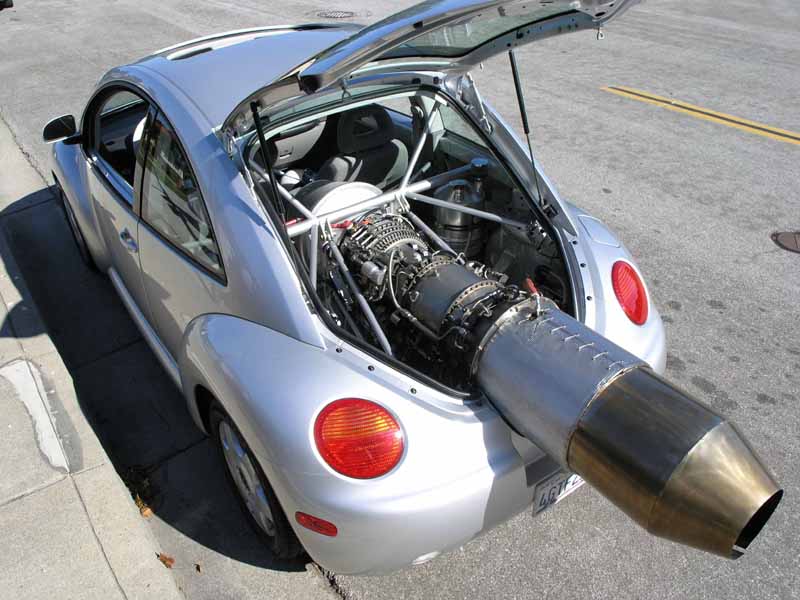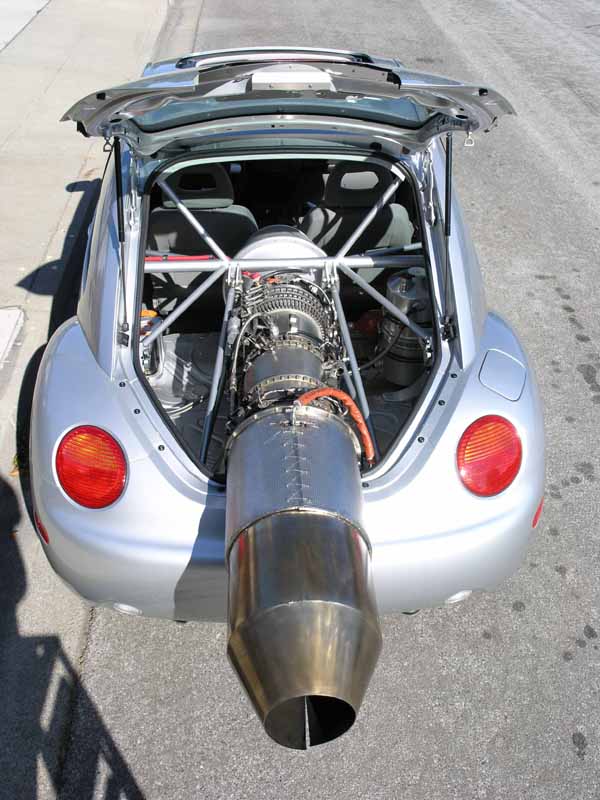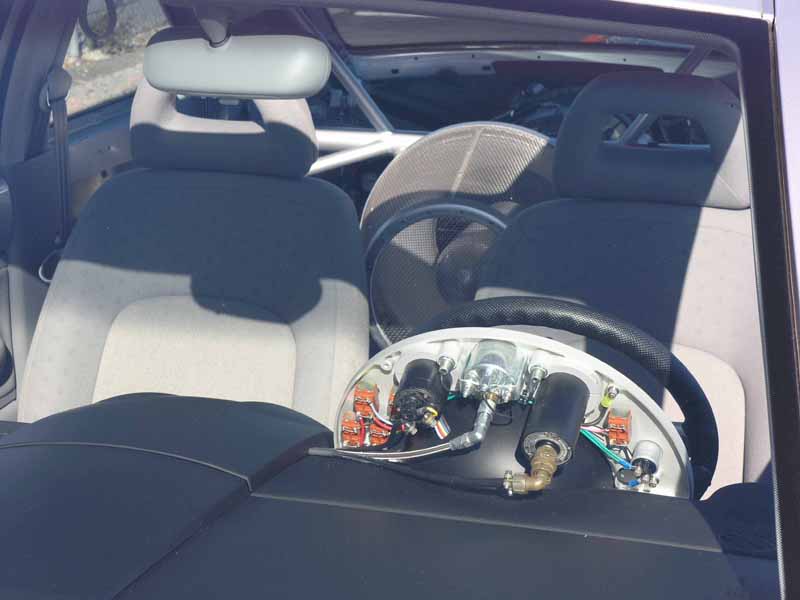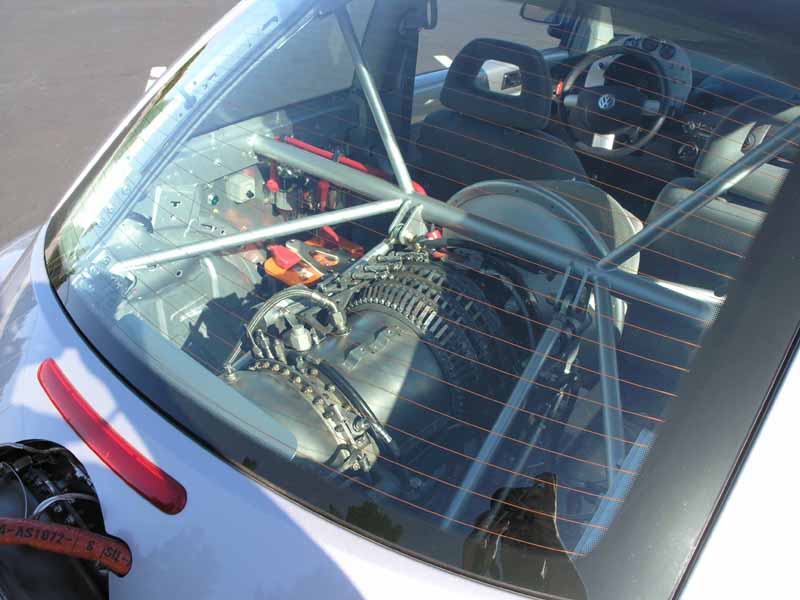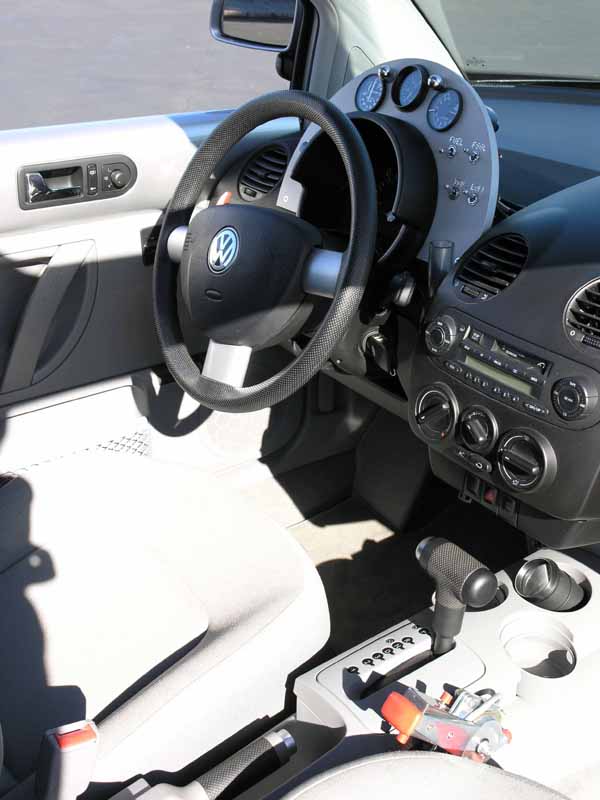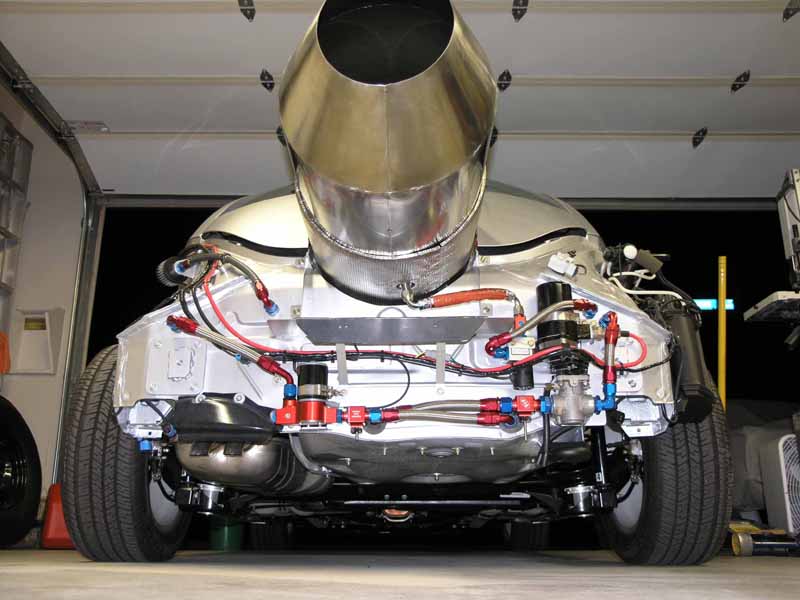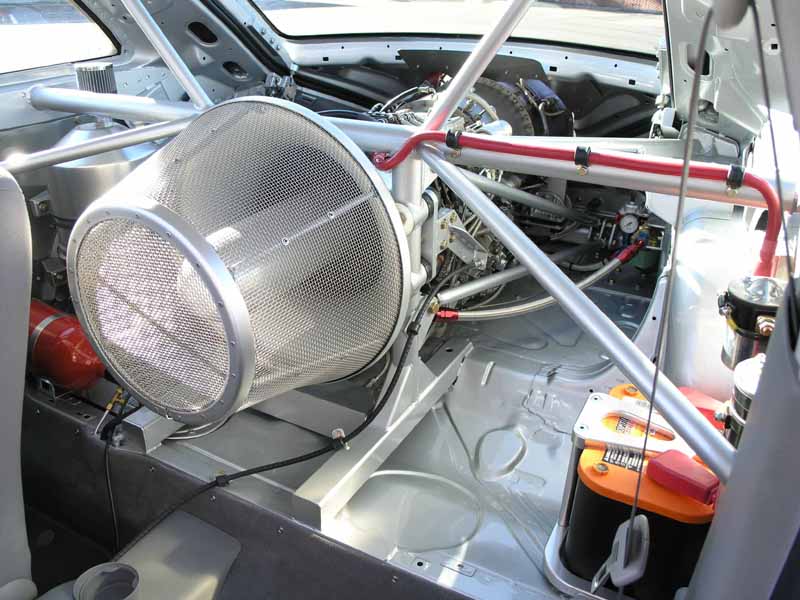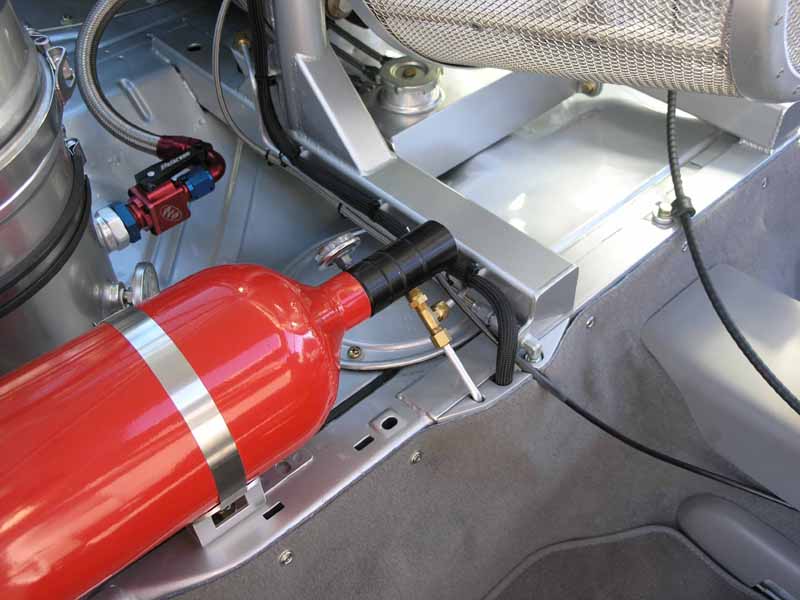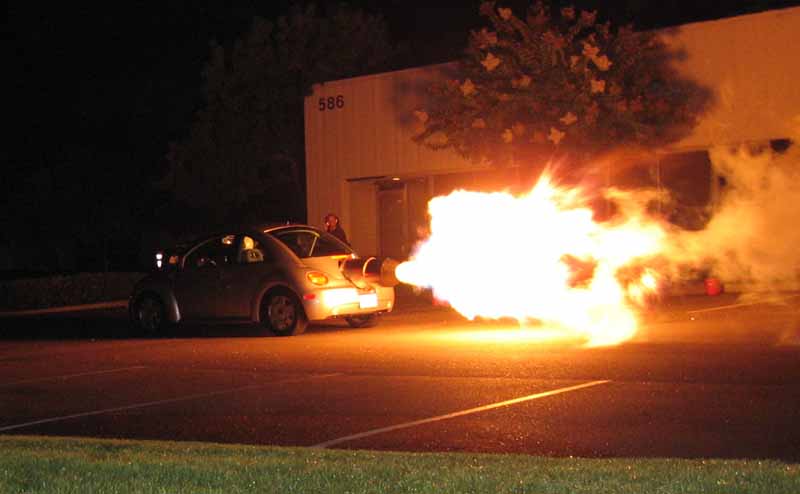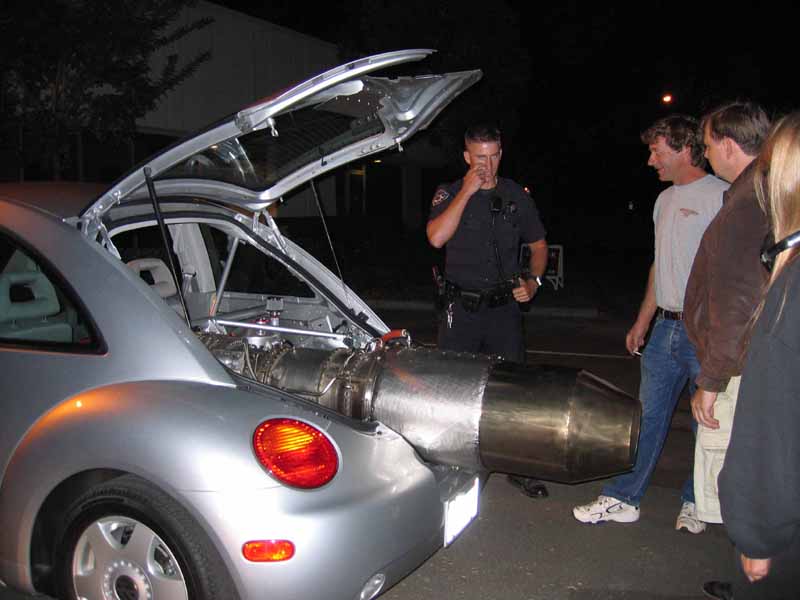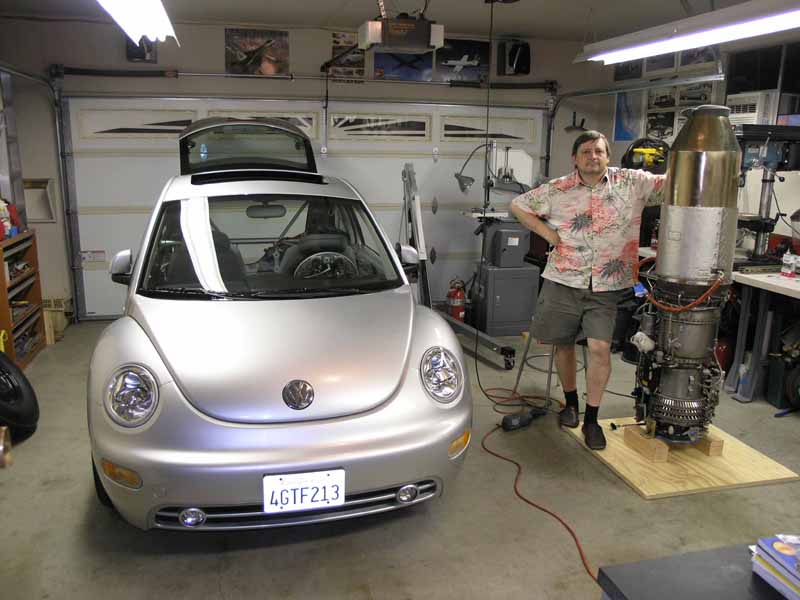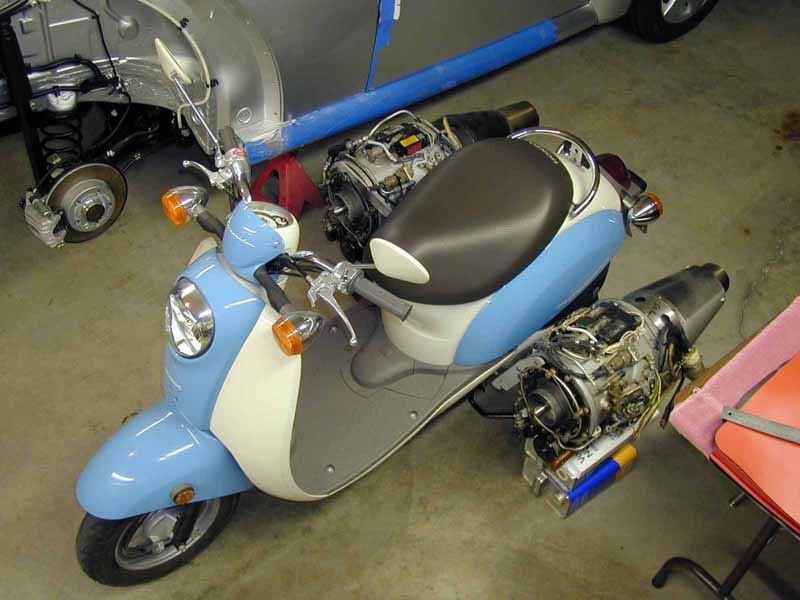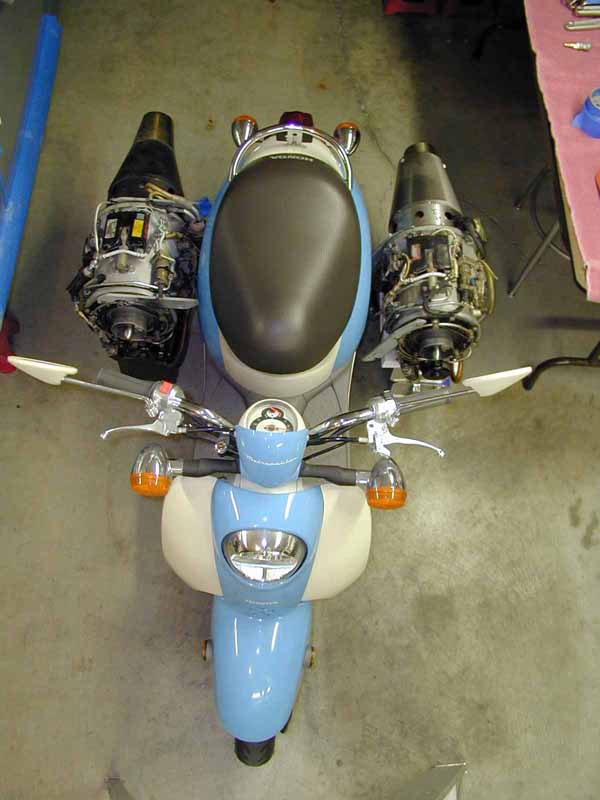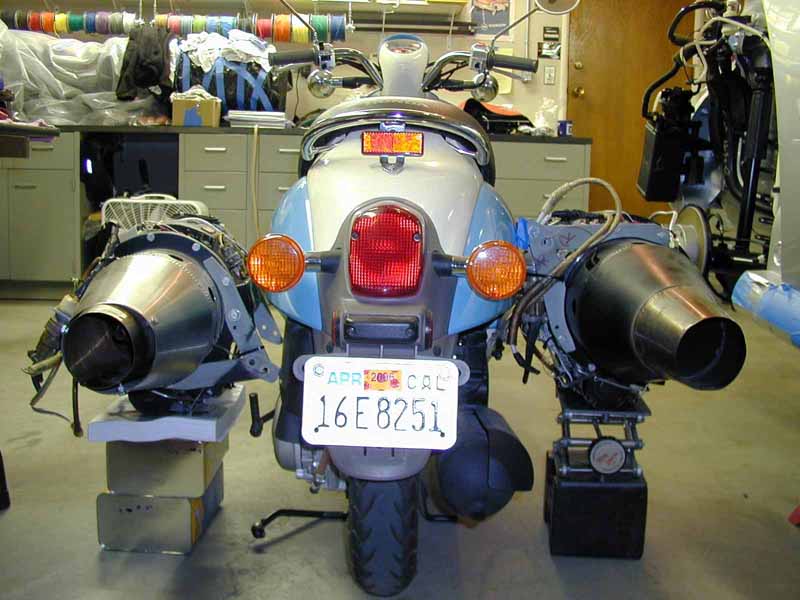"Creating a miniature star on Earth" is the goal of the National
Ignition Facility (NIF), home to the world's largest and highest-energy
laser in Livermore, California. On September
29th, 2010, the NIF completed its first integrated ignition experiment,
where it focused its 192 lasers on a small cylinder housing
a tiny frozen capsule containing hydrogen fuel, briefly bombarding it
with 1 megajoule of laser energy. The experiment was the latest in a
series of tests leading to a hoped-for "ignition", where the nuclei of
the atoms of the fuel inside the target capsule are made to fuse
together releasing tremendous energy - potentially more energy than was
put in to start the initial reaction, becoming a valuable power source.
The NIF has cost over $3.5 billion since 1997 and is a part of the
federally funded Lawrence Livermore National Laboratory. Scientists
at NIF say they hope to achieve fusion by 2012. (27 photos total)
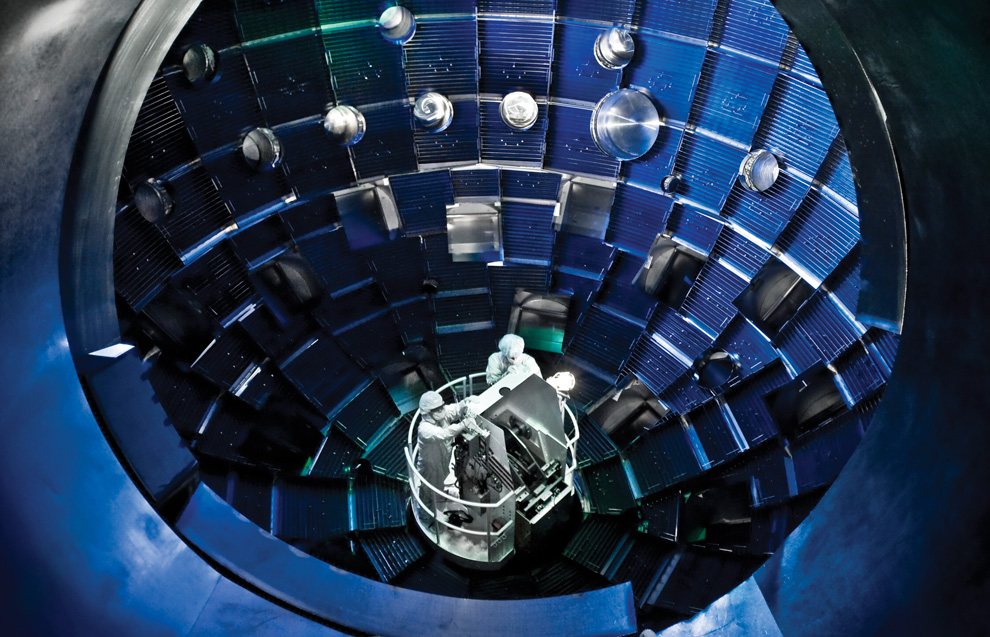
Inside the National Ignition Facility, a service system lift gives technicians access to the target chamber interior for inspection and maintenance. The chamber is a sphere 10 meters in diameter, assembled from ten-centimeter-thick aluminum panels which were preformed and then welded in place. It is covered with .3 meters of concrete which was injected with boron to absorb neutrons from the fusion reaction. The holes in the chamber permit the 192 laser beams to enter the chamber and to provide viewing ports for diagnostic tools. (NIF/Lawrence Livermore National Laboratory)
2
The single largest piece of equipment at the National Ignition Facility is its 130-ton target chamber. The design features 6 symmetric middle plates and 12 asymmetric outer plates, which were poured at the Ravenswood Aluminum Mill in Ravenswood, West Virginia. The plates were shipped to Creusot-Loire Industries in France, where they were heated and shaped in a giant press. The formed plates were then shipped to Precision Components Corp. in York, Pennsylvania, where they were trimmed and weld joints prepared. Assembly of the target chamber at Lawrence Livermore National Laboratory (seen here) was then performed in a temporary cylindrical steel enclosure. (NIF/Lawrence Livermore National Laboratory) #
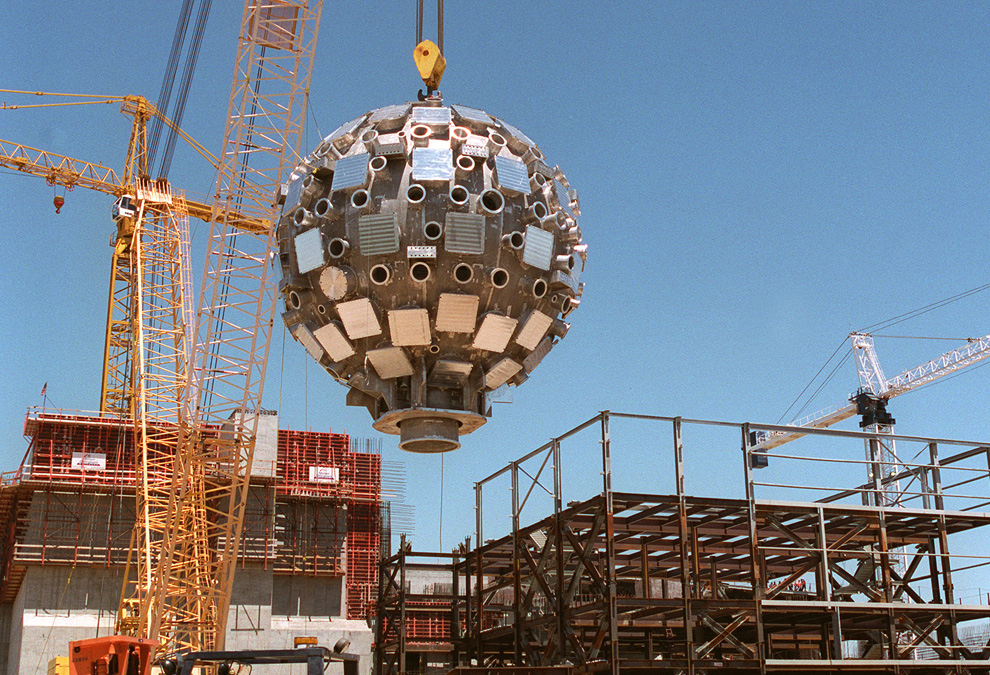
3
The 10-meter-diameter target chamber is lifted into place in June 1999. The spherical vacuum vessel was installed at Lawrence Livermore National Laboratory with one of the largest cranes in the world. (NIF/Lawrence Livermore National Laboratory) #
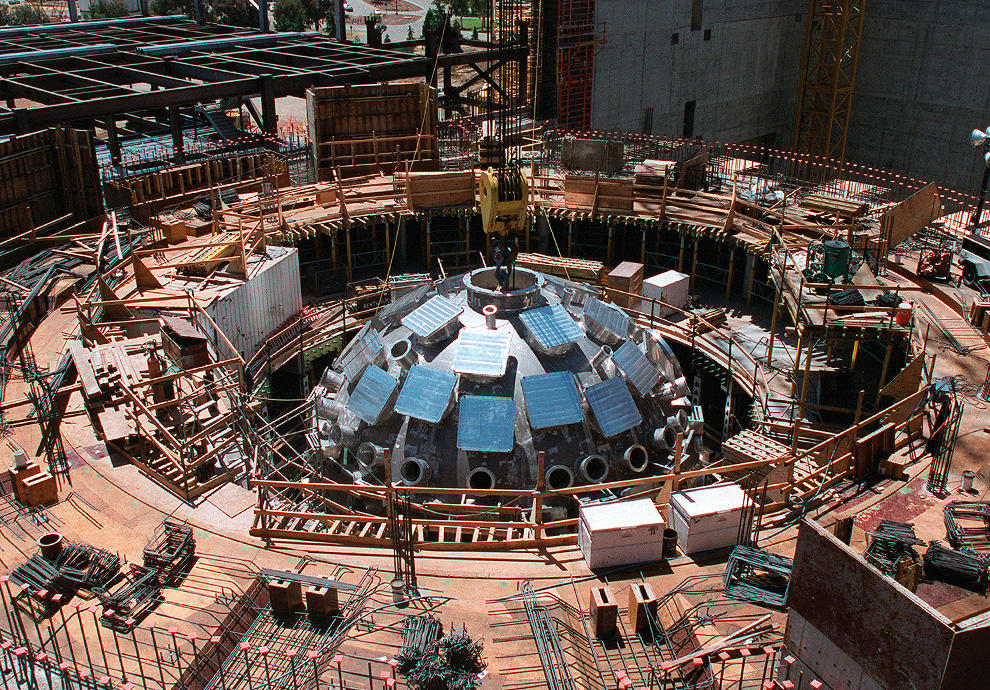
4
After the target chamber was lowered into place, the seven-story walls and roof of the Target Bay were completed. (NIF/Lawrence Livermore National Laboratory) #
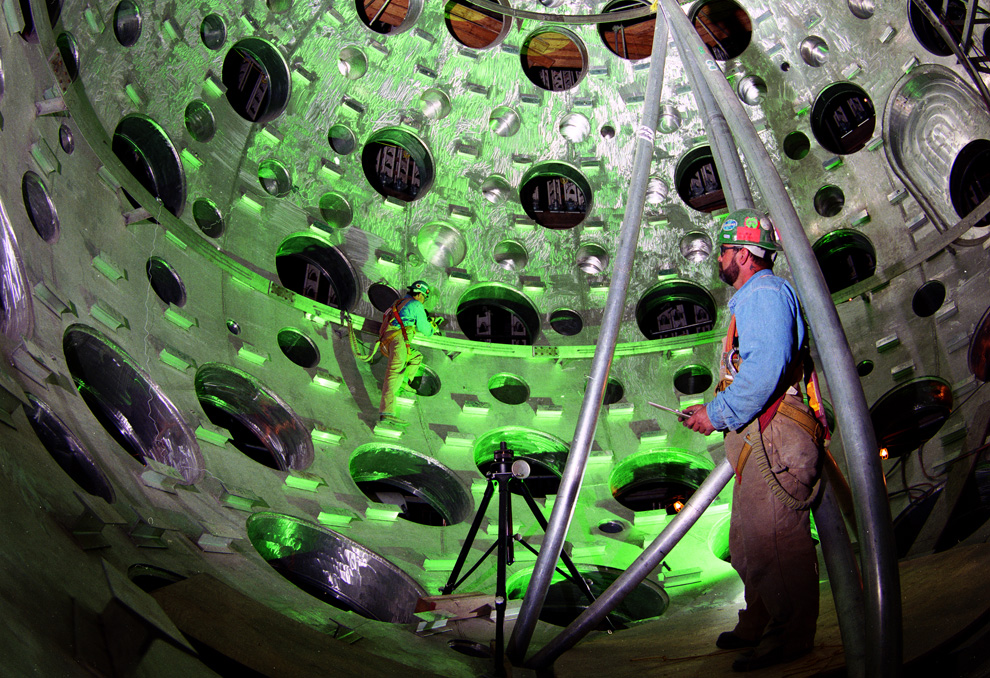
5
Construction workers install equipment inside the target chamber at the National Ignition Facility. (NIF/Lawrence Livermore National Laboratory) #
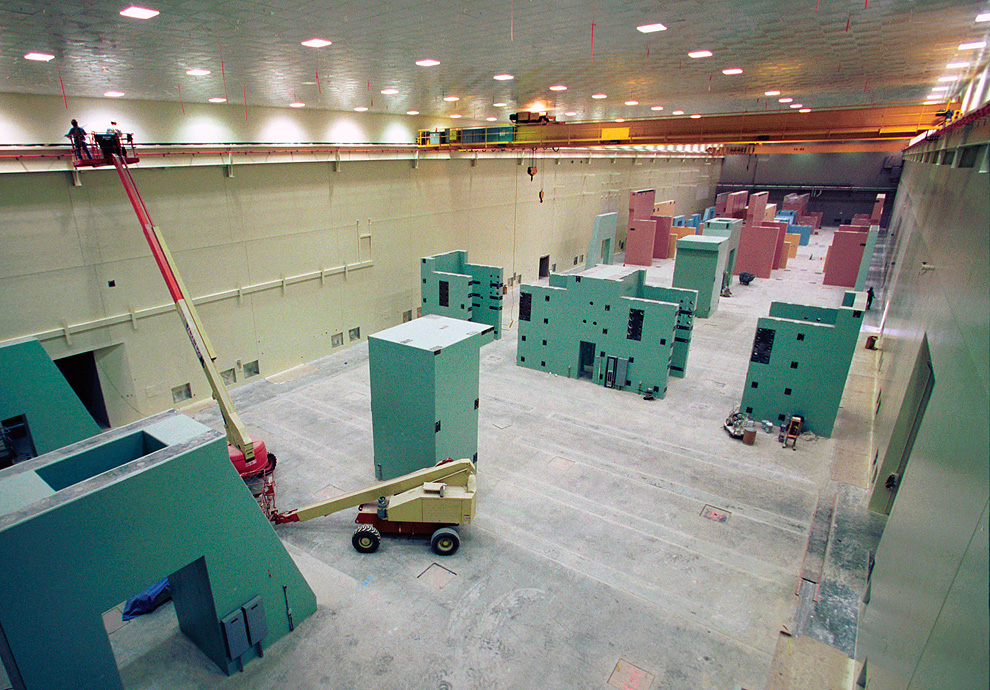
6
Concrete pedestals in the two laser bays support the beampath infrastructure system for NIF's 192 laser beams. This is one of two 96-beam laser bays that were built at the facility. (NIF/Lawrence Livermore National Laboratory) #
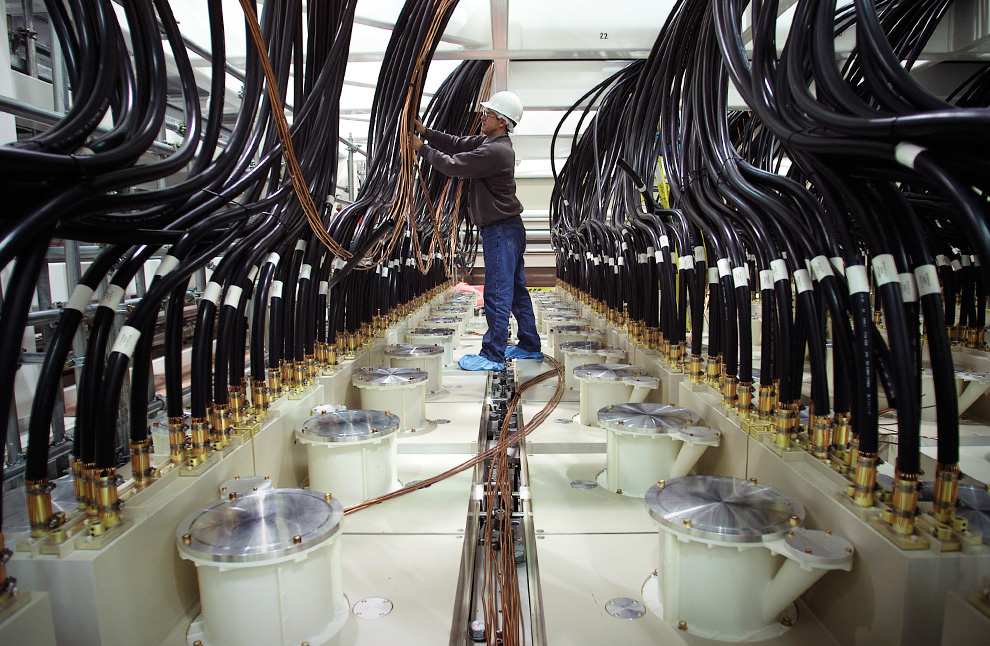
7
This photo from January 2002 shows the installation of the National Ignition Facility power-conditioning system, which has more than 160 kilometers of high-voltage cable, which delivers energy to the system's 7,680 flashlamps. (NIF/Lawrence Livermore National Laboratory) #

8
The National Ignition Facility's Laser Bay 2. The laser beams travel more than 1,000 feet before they reach the target chamber. Laser Bay 2 was commissioned on July 31, 2007. (NIF/Lawrence Livermore National Laboratory) #
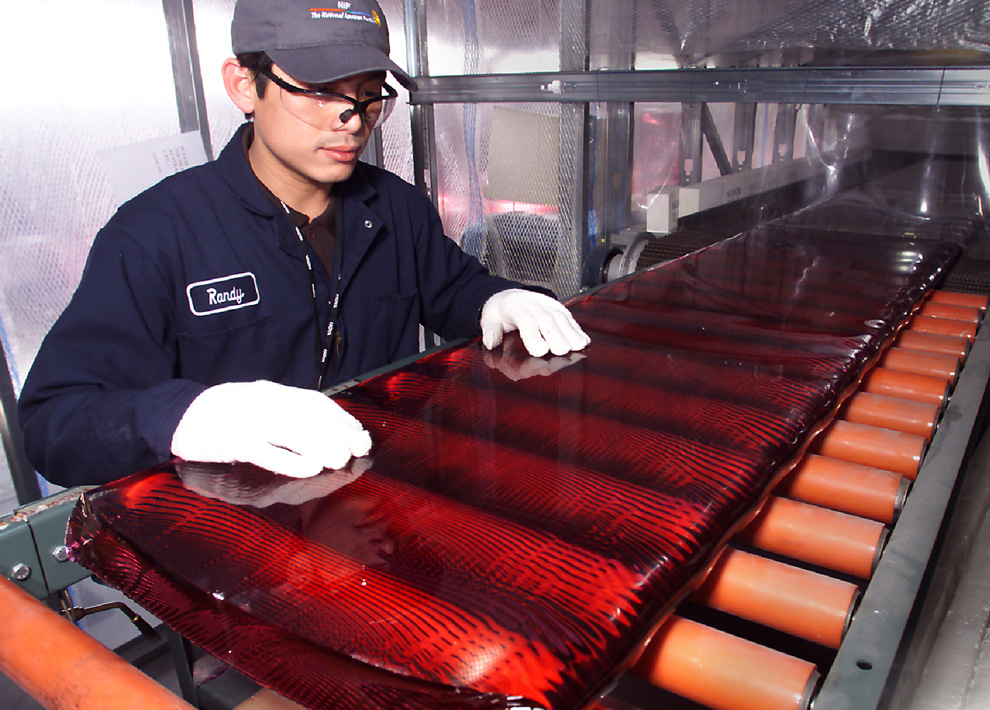
9
The fabrication of melted and rough-cut blanks of laser glass amplifier slabs needed for the NIF construction (3,072 pieces) was completed in 2005. The amplifier slabs are neodymium-doped phosphate glass manufactured by Hoya Corporation USA and Schott Glass Technologies for Lawrence Livermore National Laboratory. (NIF/Lawrence Livermore National Laboratory) #
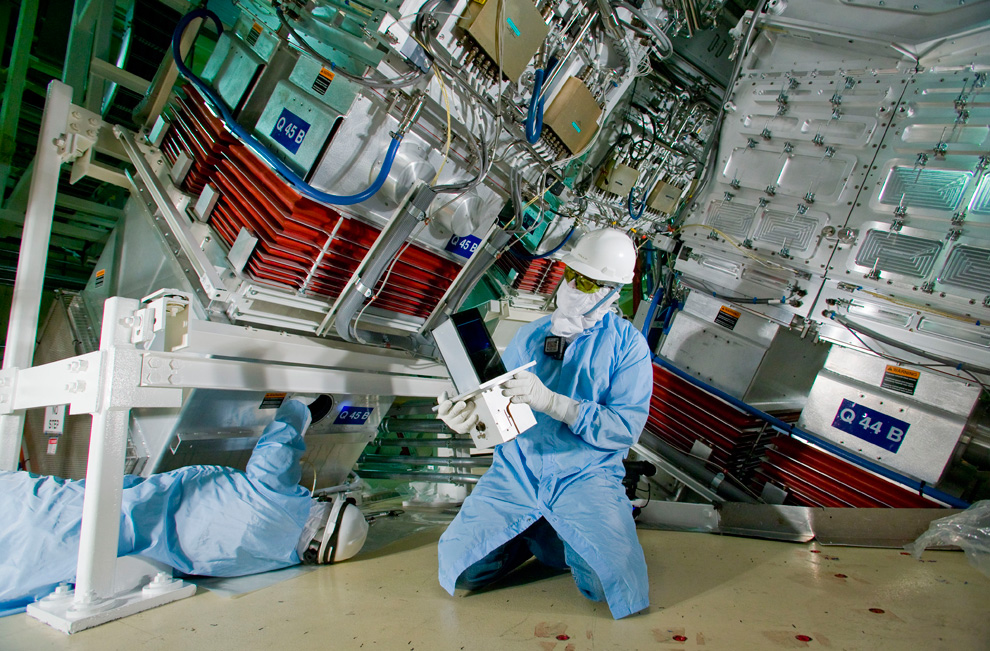
10
Lawrence Livermore National Laboratory technicians John Hollis (right) and Jim McElroy install a SIDE camera in the target bay of the NIF in January of 2009. The camera was the last of NIF's 6,206 various opto-mechanical and controls system modules called "line replaceable units" or LRUs to be installed. The first LRU, a flashlamp, was installed on Sept. 26, 2001. (NIF/Lawrence Livermore National Laboratory) #
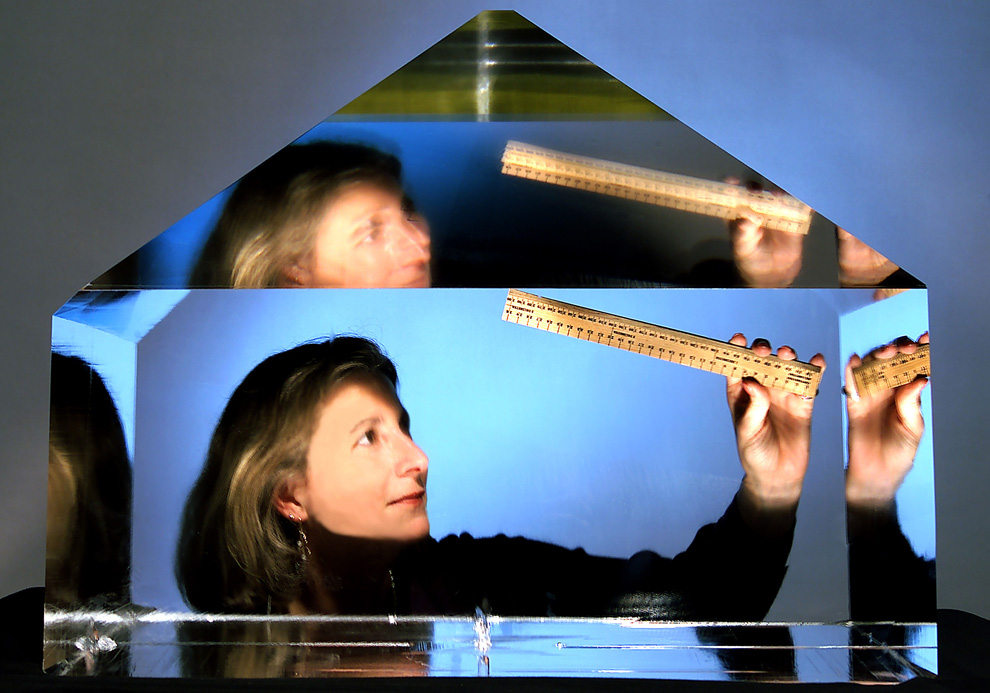
11
The NIF requires optics produced from large single crystals of potassium dihydrogen phosphate (KDP) and deuterated potassium dihydrogen phosphate (DKDP). Each crystal is sliced into 40-centimeter-square crystal plates. Traditionally DKDP has been produced by methods requiring approximately two years to grow a single crystal. With the development of rapid growth methods for KDP, the time required to grow a crystal has been reduced to just two months. The current rapid growth process produces optics that are up to 66cm (2 ft, 2 in) wide, 50cm (1 ft, 8 in) tall, and weighing 380 kg (840 lbs). NIF requires 192 optics produced from traditionally grown DKDP and 480 optics rapidly grown from KDP. Approximately 75 production crystals will have been grown totaling a weight of nearly 100 tons. (NIF/Lawrence Livermore National Laboratory) #

12
Workers on the NIF target bay floor just outside the target chamber. (NIF/Lawrence Livermore National Laboratory/Jacqueline McBride) #
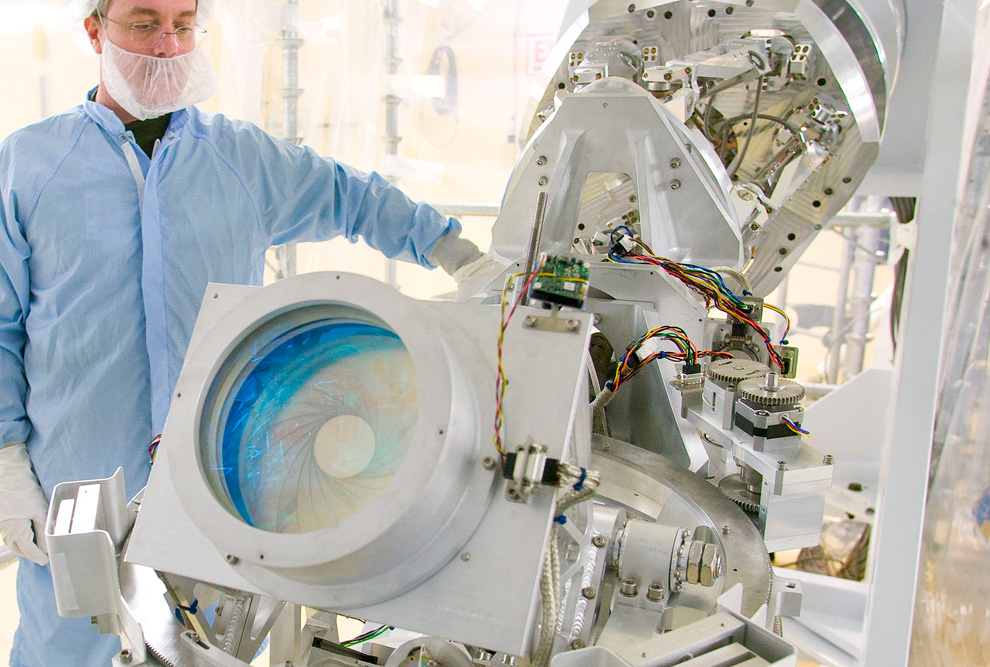
13
A technician inspects the final optics inspection (FODI) system for the NIF. When the FODI is extended into the 10-meter diameter target chamber from a diagnostic instrument manipulator, it can produce images of all 192 beamline final optics assemblies. (NIF/Lawrence Livermore National Laboratory) #
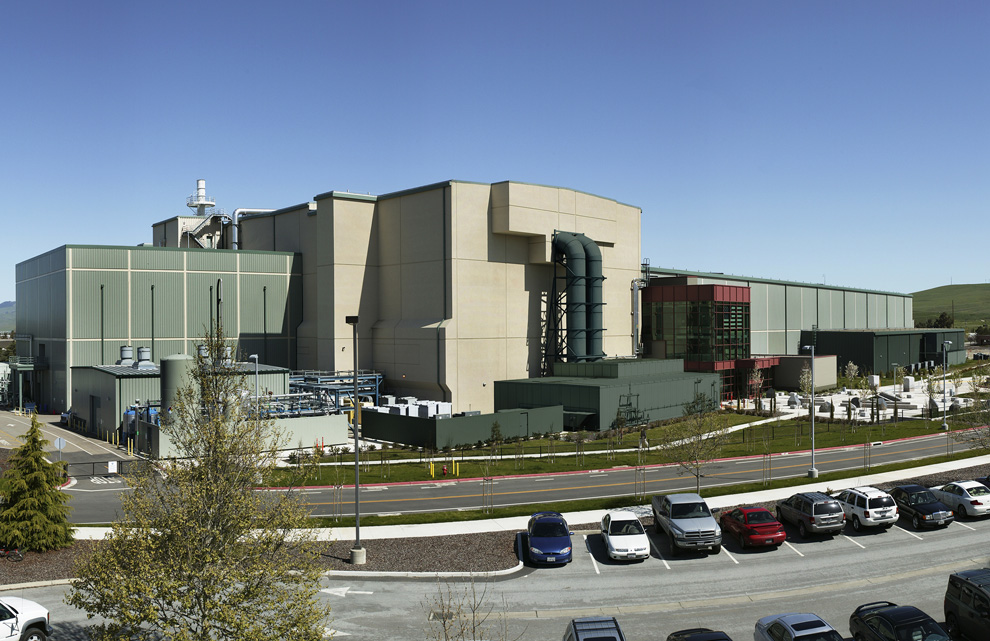
14
The exterior of the National Ignition Facility in in Livermore, California. Construction of the facility was completed in March 2009 and it was dedicated on May 31, 2009. (NIF/Lawrence Livermore National Laboratory) #
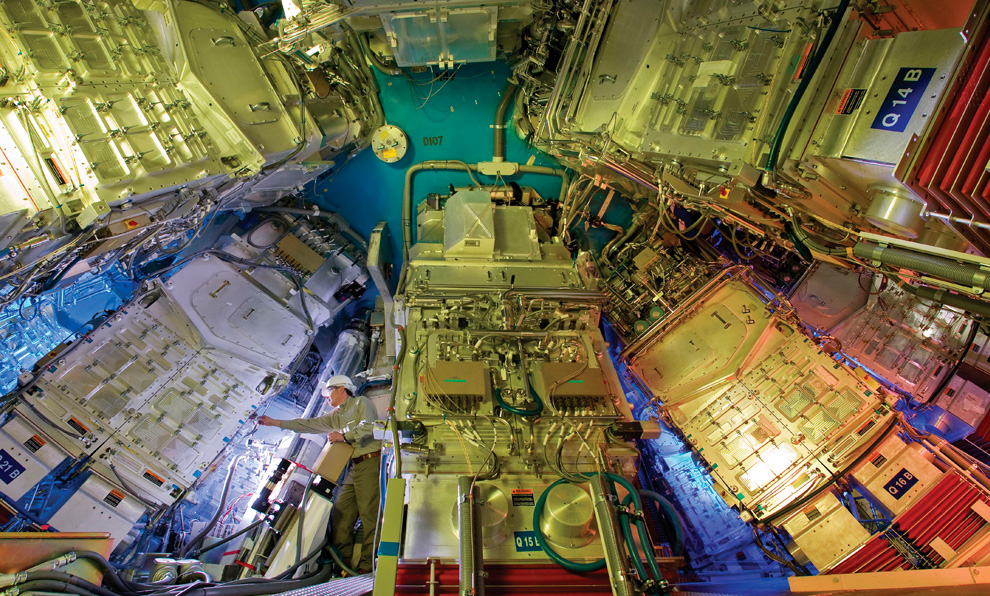
15
The final optics assemblies, shown here mounted on the lower hemisphere of the target chamber, contain special optics for beam conditioning, color conversion, and color separation. They also focus the beams from 40-by-40 centimeter squares of light to a spot on the target only .2 to 2 millimeters in diameter. (NIF/Lawrence Livermore National Laboratory) #

16
The NIF's millimeter-sized targets must be designed and fabricated to meet precise specifications for density, concentricity and surface smoothness for NIF experiments. Scientists and engineers at Lawrence Livermore National Laboratory like Richard Montesanti have developed the precision robotic assembly machine to manufacture the small and complex laser-driven fusion ignition targets. (NIF/Lawrence Livermore National Laboratory/Jacqueline McBride) #
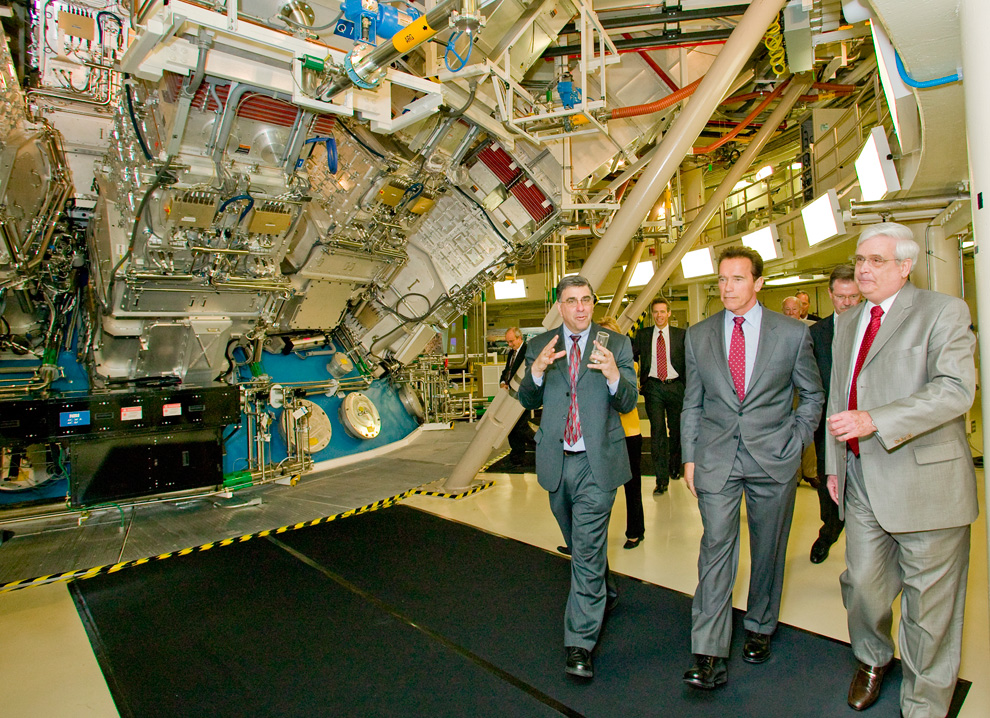
17
California governor Arnold Schwarzenegger toured the stadium-sized NIF on Nov. 10, 2008. Pictured from left: NIF director Dr. Edward Moses, Governor Schwarzenegger, LLNL Director Dr. George Miller. (NIF/Lawrence Livermore National Laboratory/Jacqueline McBride) #
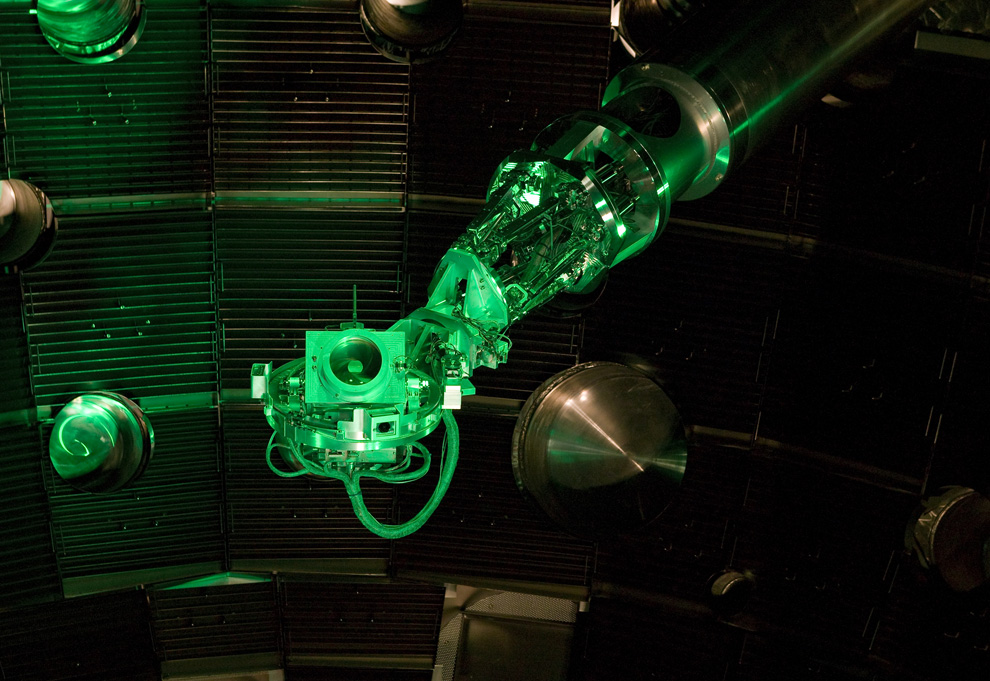
18
NIF's final optics inspection system, extended into the target chamber designed to produce images of all 192 beamline final optics assemblies. (NIF/Lawrence Livermore National Laboratory) #
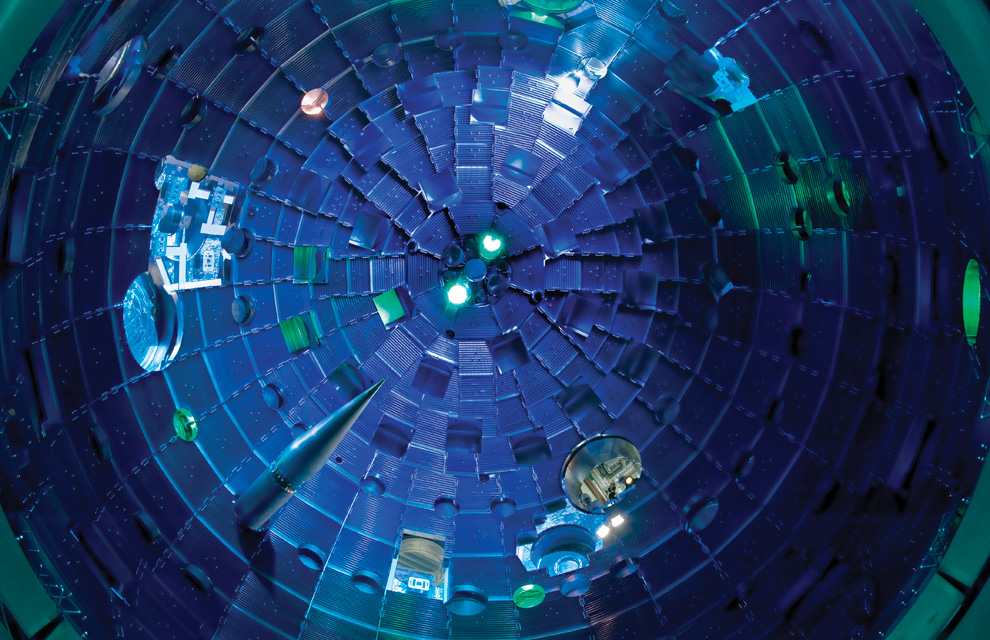
19
This view from the bottom of the target chamber shows the target positioner being inserted (spike at 7 o'clock position). Pulses from NIF's high-powered lasers race toward the Target Bay , arriving at the center of the target chamber within a few trillionths of a second of each other, aligned to the accuracy of the diameter of a human hair. (NIF/Lawrence Livermore National Laboratory) #
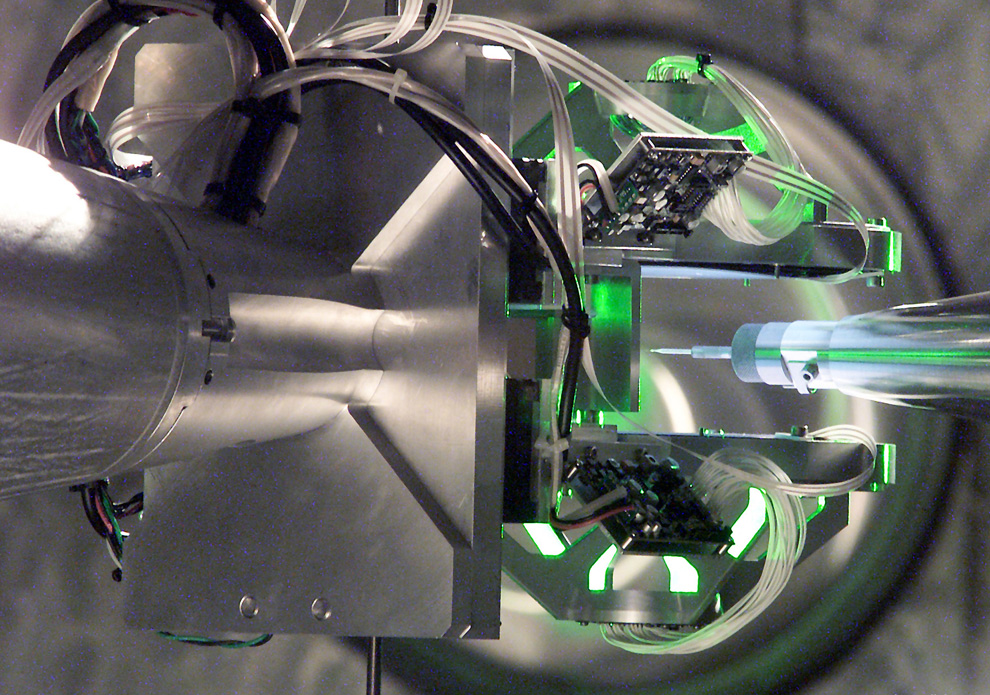
20
The target positioner and target alignment system precisely locate a target in the NIF target chamber. (NIF/Lawrence Livermore National Laboratory) #
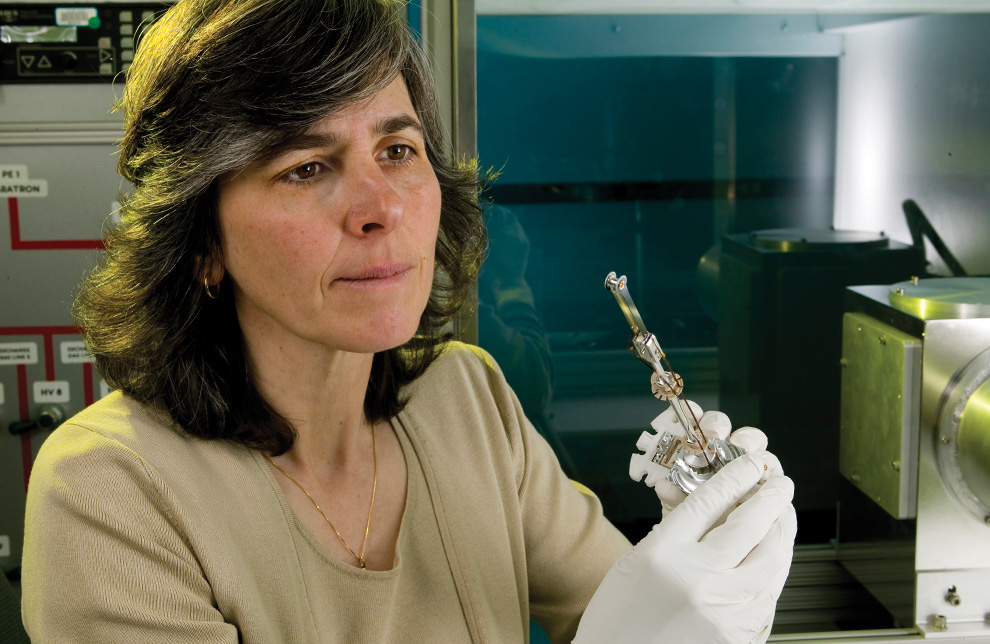
21
A woman holds up an apparatus with the hohlraum on the end. The hohlraum is a pencil-eraser-sized cylinder that holds the target, a spherical capsule no larger than a peppercorn, destined to be bombarded with 192 powerful lasers. (NIF/Lawrence Livermore National Laboratory) #
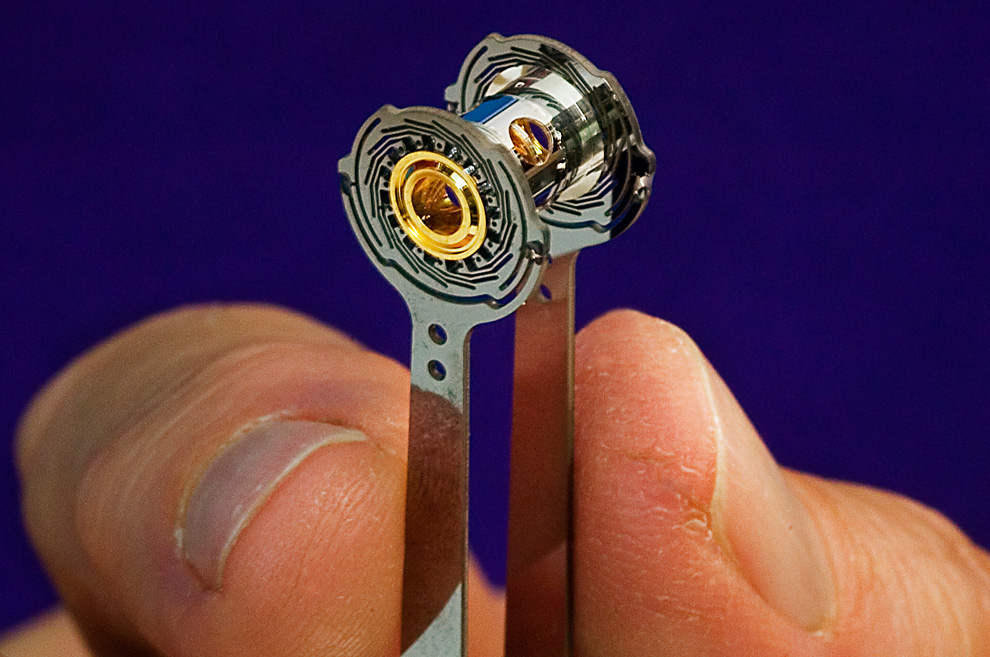
22
A gold hohlraum for use in the NIF. German for "hollow space," a hohlraum is a small hollow metal cylinder surrounding a fusion fuel capsule. In radiation thermodynamics, a hohlraum is defined as "a cavity whose walls are in radiative equilibrium with the radiant energy within the cavity." The hohlraum converts directed energy from either laser light or particle beams into X-ray radiation. (NIF/Lawrence Livermore National Laboratory) #

23
A prototype 2-millimeter diameter beryllium-coated laser fusion target capsule is suspended between two ultra-thin plastic sheets used to facilitate handling of the shell. The tiny capsule will be filled with a liquid mixture of deuterium and tritium, which will then be frozen to just above 18 degrees Kelvin, or -427° Fahrenheit. Then the 192 laser beams enter the hohlraum from top and bottom, creating X-rays that heat the capsule to temperatures as high as those within the sun. This creates incredible pressures that compress the fuel contained inside the capsule, forcing the atoms inside to fuse together while releasing a tremendous burst of energy. (NIF/Lawrence Livermore National Laboratory) #

24
On October 6th, 2010, the target assembly holding the hohlraum with its tiny capsule inside is mounted in the cryogenic target positioning device at the NIF. The two copper-colored arms form a shroud around the cold target to protect it until they open five seconds before a shot. (NIF/Lawrence Livermore National Laboratory) #
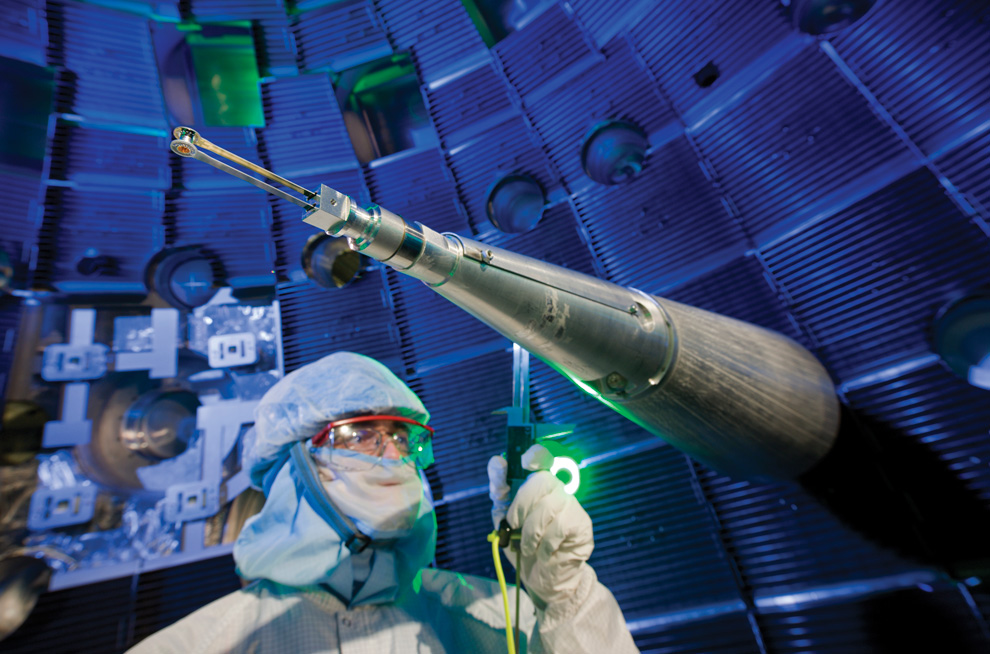
25
A positioner precisely centers the target inside the target chamber and serves as a reference to align the laser beams. (NIF/Lawrence Livermore National Laboratory) #
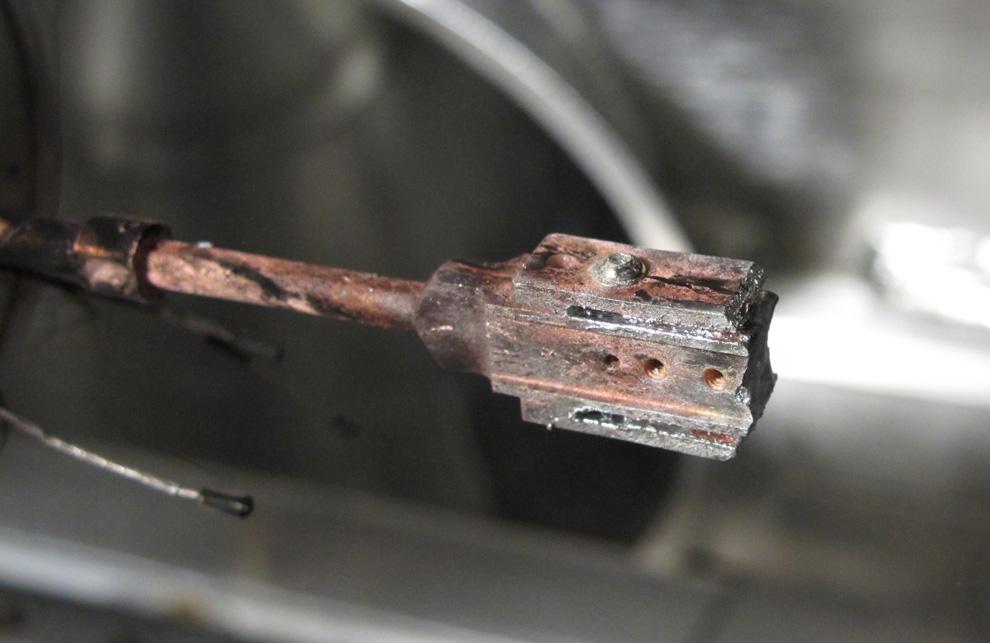
26
The remains of the target assembly after the October 6th, 2010 shot. The NIF's 192-beam laser system fired 1 megajoule of laser energy into its first cryogenically layered capsule. A megajoule is equivalent to the energy consumed by 10,000 100-watt light bulbs in one second. (NIF/Lawrence Livermore National Laboratory) #
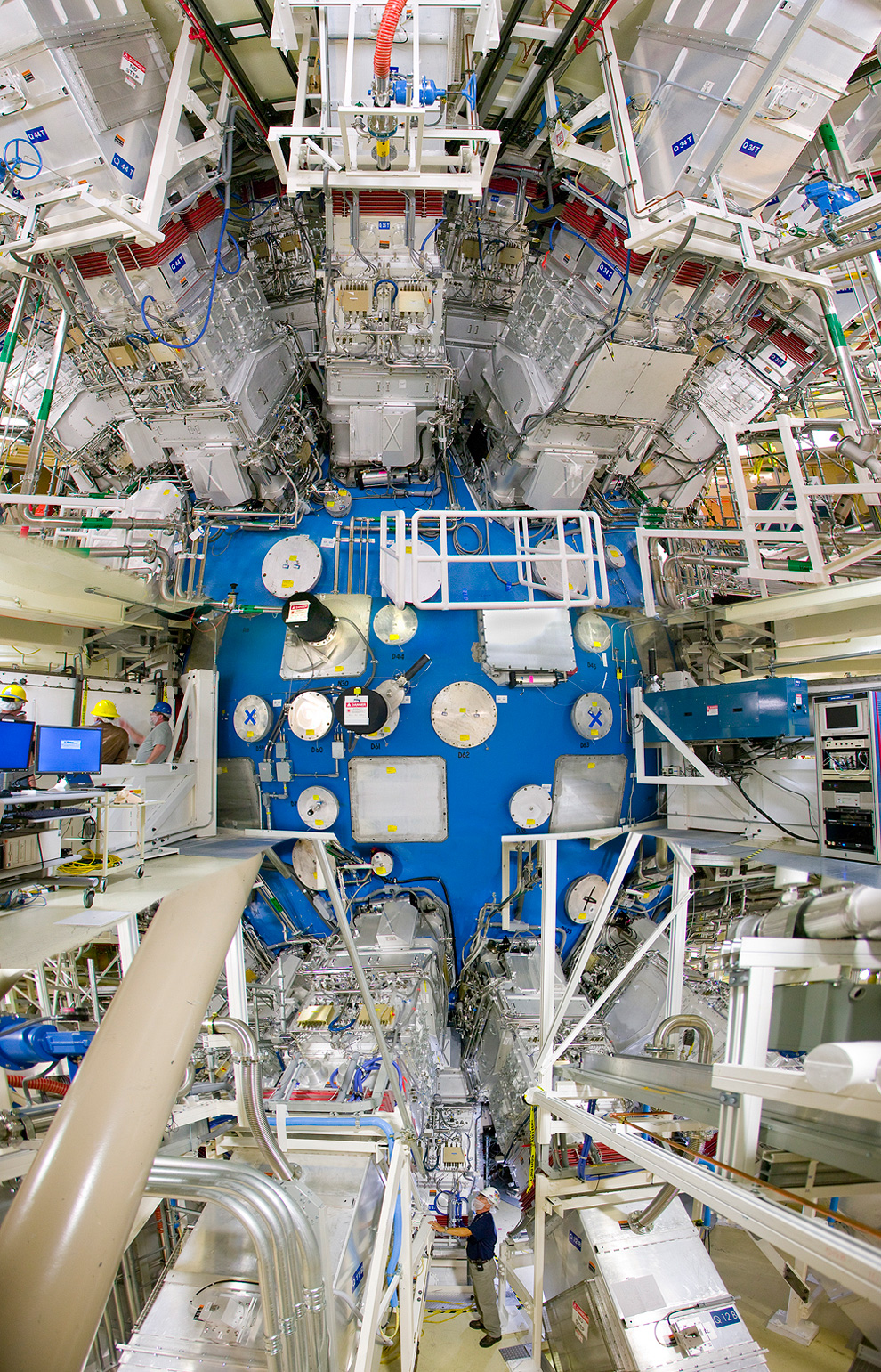
27
A tall composite photograph showing three stories of the target bay and many of the lasers and diagnostic devices surrounding the NIF's target chamber at center. (NIF/Lawrence Livermore National Laboratory) #

Inside the National Ignition Facility, a service system lift gives technicians access to the target chamber interior for inspection and maintenance. The chamber is a sphere 10 meters in diameter, assembled from ten-centimeter-thick aluminum panels which were preformed and then welded in place. It is covered with .3 meters of concrete which was injected with boron to absorb neutrons from the fusion reaction. The holes in the chamber permit the 192 laser beams to enter the chamber and to provide viewing ports for diagnostic tools. (NIF/Lawrence Livermore National Laboratory)

2
The single largest piece of equipment at the National Ignition Facility is its 130-ton target chamber. The design features 6 symmetric middle plates and 12 asymmetric outer plates, which were poured at the Ravenswood Aluminum Mill in Ravenswood, West Virginia. The plates were shipped to Creusot-Loire Industries in France, where they were heated and shaped in a giant press. The formed plates were then shipped to Precision Components Corp. in York, Pennsylvania, where they were trimmed and weld joints prepared. Assembly of the target chamber at Lawrence Livermore National Laboratory (seen here) was then performed in a temporary cylindrical steel enclosure. (NIF/Lawrence Livermore National Laboratory) #

3
The 10-meter-diameter target chamber is lifted into place in June 1999. The spherical vacuum vessel was installed at Lawrence Livermore National Laboratory with one of the largest cranes in the world. (NIF/Lawrence Livermore National Laboratory) #

4
After the target chamber was lowered into place, the seven-story walls and roof of the Target Bay were completed. (NIF/Lawrence Livermore National Laboratory) #

5
Construction workers install equipment inside the target chamber at the National Ignition Facility. (NIF/Lawrence Livermore National Laboratory) #

6
Concrete pedestals in the two laser bays support the beampath infrastructure system for NIF's 192 laser beams. This is one of two 96-beam laser bays that were built at the facility. (NIF/Lawrence Livermore National Laboratory) #

7
This photo from January 2002 shows the installation of the National Ignition Facility power-conditioning system, which has more than 160 kilometers of high-voltage cable, which delivers energy to the system's 7,680 flashlamps. (NIF/Lawrence Livermore National Laboratory) #

8
The National Ignition Facility's Laser Bay 2. The laser beams travel more than 1,000 feet before they reach the target chamber. Laser Bay 2 was commissioned on July 31, 2007. (NIF/Lawrence Livermore National Laboratory) #

9
The fabrication of melted and rough-cut blanks of laser glass amplifier slabs needed for the NIF construction (3,072 pieces) was completed in 2005. The amplifier slabs are neodymium-doped phosphate glass manufactured by Hoya Corporation USA and Schott Glass Technologies for Lawrence Livermore National Laboratory. (NIF/Lawrence Livermore National Laboratory) #

10
Lawrence Livermore National Laboratory technicians John Hollis (right) and Jim McElroy install a SIDE camera in the target bay of the NIF in January of 2009. The camera was the last of NIF's 6,206 various opto-mechanical and controls system modules called "line replaceable units" or LRUs to be installed. The first LRU, a flashlamp, was installed on Sept. 26, 2001. (NIF/Lawrence Livermore National Laboratory) #

11
The NIF requires optics produced from large single crystals of potassium dihydrogen phosphate (KDP) and deuterated potassium dihydrogen phosphate (DKDP). Each crystal is sliced into 40-centimeter-square crystal plates. Traditionally DKDP has been produced by methods requiring approximately two years to grow a single crystal. With the development of rapid growth methods for KDP, the time required to grow a crystal has been reduced to just two months. The current rapid growth process produces optics that are up to 66cm (2 ft, 2 in) wide, 50cm (1 ft, 8 in) tall, and weighing 380 kg (840 lbs). NIF requires 192 optics produced from traditionally grown DKDP and 480 optics rapidly grown from KDP. Approximately 75 production crystals will have been grown totaling a weight of nearly 100 tons. (NIF/Lawrence Livermore National Laboratory) #

12
Workers on the NIF target bay floor just outside the target chamber. (NIF/Lawrence Livermore National Laboratory/Jacqueline McBride) #

13
A technician inspects the final optics inspection (FODI) system for the NIF. When the FODI is extended into the 10-meter diameter target chamber from a diagnostic instrument manipulator, it can produce images of all 192 beamline final optics assemblies. (NIF/Lawrence Livermore National Laboratory) #

14
The exterior of the National Ignition Facility in in Livermore, California. Construction of the facility was completed in March 2009 and it was dedicated on May 31, 2009. (NIF/Lawrence Livermore National Laboratory) #

15
The final optics assemblies, shown here mounted on the lower hemisphere of the target chamber, contain special optics for beam conditioning, color conversion, and color separation. They also focus the beams from 40-by-40 centimeter squares of light to a spot on the target only .2 to 2 millimeters in diameter. (NIF/Lawrence Livermore National Laboratory) #

16
The NIF's millimeter-sized targets must be designed and fabricated to meet precise specifications for density, concentricity and surface smoothness for NIF experiments. Scientists and engineers at Lawrence Livermore National Laboratory like Richard Montesanti have developed the precision robotic assembly machine to manufacture the small and complex laser-driven fusion ignition targets. (NIF/Lawrence Livermore National Laboratory/Jacqueline McBride) #

17
California governor Arnold Schwarzenegger toured the stadium-sized NIF on Nov. 10, 2008. Pictured from left: NIF director Dr. Edward Moses, Governor Schwarzenegger, LLNL Director Dr. George Miller. (NIF/Lawrence Livermore National Laboratory/Jacqueline McBride) #

18
NIF's final optics inspection system, extended into the target chamber designed to produce images of all 192 beamline final optics assemblies. (NIF/Lawrence Livermore National Laboratory) #

19
This view from the bottom of the target chamber shows the target positioner being inserted (spike at 7 o'clock position). Pulses from NIF's high-powered lasers race toward the Target Bay , arriving at the center of the target chamber within a few trillionths of a second of each other, aligned to the accuracy of the diameter of a human hair. (NIF/Lawrence Livermore National Laboratory) #

20
The target positioner and target alignment system precisely locate a target in the NIF target chamber. (NIF/Lawrence Livermore National Laboratory) #

21
A woman holds up an apparatus with the hohlraum on the end. The hohlraum is a pencil-eraser-sized cylinder that holds the target, a spherical capsule no larger than a peppercorn, destined to be bombarded with 192 powerful lasers. (NIF/Lawrence Livermore National Laboratory) #

22
A gold hohlraum for use in the NIF. German for "hollow space," a hohlraum is a small hollow metal cylinder surrounding a fusion fuel capsule. In radiation thermodynamics, a hohlraum is defined as "a cavity whose walls are in radiative equilibrium with the radiant energy within the cavity." The hohlraum converts directed energy from either laser light or particle beams into X-ray radiation. (NIF/Lawrence Livermore National Laboratory) #

23
A prototype 2-millimeter diameter beryllium-coated laser fusion target capsule is suspended between two ultra-thin plastic sheets used to facilitate handling of the shell. The tiny capsule will be filled with a liquid mixture of deuterium and tritium, which will then be frozen to just above 18 degrees Kelvin, or -427° Fahrenheit. Then the 192 laser beams enter the hohlraum from top and bottom, creating X-rays that heat the capsule to temperatures as high as those within the sun. This creates incredible pressures that compress the fuel contained inside the capsule, forcing the atoms inside to fuse together while releasing a tremendous burst of energy. (NIF/Lawrence Livermore National Laboratory) #

24
On October 6th, 2010, the target assembly holding the hohlraum with its tiny capsule inside is mounted in the cryogenic target positioning device at the NIF. The two copper-colored arms form a shroud around the cold target to protect it until they open five seconds before a shot. (NIF/Lawrence Livermore National Laboratory) #

25
A positioner precisely centers the target inside the target chamber and serves as a reference to align the laser beams. (NIF/Lawrence Livermore National Laboratory) #

26
The remains of the target assembly after the October 6th, 2010 shot. The NIF's 192-beam laser system fired 1 megajoule of laser energy into its first cryogenically layered capsule. A megajoule is equivalent to the energy consumed by 10,000 100-watt light bulbs in one second. (NIF/Lawrence Livermore National Laboratory) #

27
A tall composite photograph showing three stories of the target bay and many of the lasers and diagnostic devices surrounding the NIF's target chamber at center. (NIF/Lawrence Livermore National Laboratory) #
